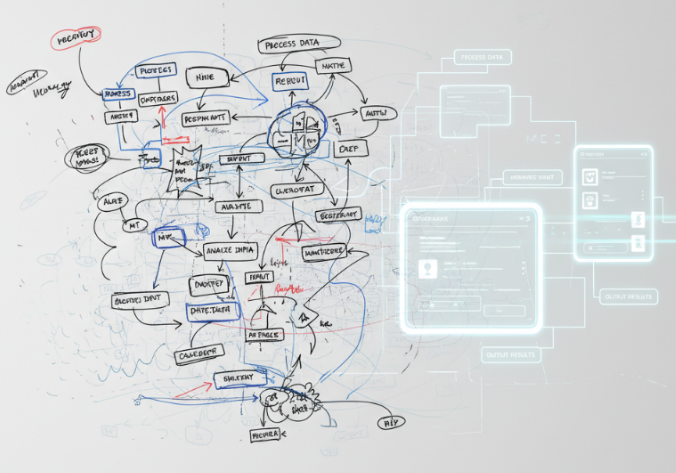I Got Overwhelmed Helping Startups, So I Cloned Myself with AI

How a simple request to give a talk led me down a rabbit hole of building a full-stack, autonomous marketing strategist.
There's a strange and wonderful problem that happens when you start to get good at something: people notice.
After years of working in market strategy at a major university and mentoring early-stage founders, I found myself with a unique blend of skills. I could talk to a business owner, understand their goals, and then translate that into a concrete digital marketing and SEO plan. The requests for help started trickling in, then became a flood.
I was thrilled to help, but I hit a wall. Most of these requests came from passionate, early-stage founders who were exactly the kind of people I wanted to support. They also had virtually no budget. I was spending my nights and weekends giving away my expertise for free, and it wasn't scalable.
The turning point came when the McFerrin Center for Entrepreneurship at Texas A&M asked me to give a presentation on SEO to their veterans' program. I could have created a
PowerPoint. I could have walked them through a few case studies.
Instead, a different, far more obsessive thought took hold: "What if, instead of just talking about the process, I could build the process?"
What if I could create a tool that would embody the entire strategic consultation, a digital version of myself that could provide world-class market analysis, on-demand?
So, I did. What started as a demo for a talk became my sole focus. It evolved from a simple script into a fully-fledged, standalone application - an autonomous marketing strategist.
---
Phase 1: From Local Model to a Glimpse of the Future
My normal workflow for a project like this is to start small and local. I connected a few data sources and began fine-tuning a Gemma-2B model on my home server. The goal was to prove the concept: could I teach a small model to perform a basic analysis of a business's website?
The results were promising. My little Gemma model, bless its heart, was giving some surprisingly good information. It could pull out keywords, identify a business's core services, and offer some basic advice. It was a solid proof-of-concept.
But then, out of curiosity, I decided to swap out my local model for an API call to a more powerful one. I plugged into Google's Gemini 2.0.
The difference was staggering.
It wasn't just an incremental improvement; it was a phase shift. The depth, the nuance, the sheer creative and analytical power of the larger model blew me away. It wasn't just identifying keywords; it was generating entire customer personas. It wasn't just summarizing text; it was creating cohesive, multi-part strategic marketing plans.
This was the moment the project changed. This was no longer a demo for a talk. This was a real product.
---
Phase 2: Architecting the Autonomous Strategist
I went back to the drawing board, this time with a much grander vision. I architected a full-stack, AI-powered platform designed to mimic the entire workflow of a human consultant.
The system is built on a resilient, asynchronous Python backend using Django and Celery, designed to handle a complex, multi-stage process.
Here's how it works:
1. The Reconnaissance: The process starts with a single input: a business's URL. The application dispatches a Selenium-powered scraper to perform a deep analysis of the website, extracting clean, meaningful content and identifying core business details.
2. The Intelligence Gathering: This is where the orchestration begins. The system initiates a series of parallel, asynchronous calls to a whole suite of Google APIs. It's like sending out a team of specialized analysts all at once:
Google Ads API: To gather keyword intelligence, search volume, and cost-per-click data.
Google Maps API: To find and analyze local competitors, pulling their ratings, reviews, and services.
PageSpeed Insights API: To perform a full technical audit of the target website.
Natural Language API: To analyze the sentiment and entity structure of the site's content.
3. The Strategic Synthesis (The AI Core): This is the brain. The mountain of structured and unstructured data gathered in the previous step is fed into a sophisticated chain of prompts for Gemini 2.0. This isn't a single prompt; it's a choreographed conversation where different AI "specialists" are called upon to perform specific tasks:
An "Audience Analyst" generates detailed customer personas.
A "Competitive Strategist" analyzes competitor reviews and creates a "Counter-Positioning
Kit" to exploit their weaknesses.
A "Content Architect" designs a full 12-month, data-driven content and advertising plan based on seasonal demand forecasts.
Finally, a "Lead Strategist" synthesizes everything into a high-level executive summary and a prioritized, step-by-step action plan.
4. The Interactive Delivery: The final, multi-part report isn't delivered as a static PDF. It's rendered in an interactive dashboard where the user can dive into each section. The capstone feature is a RAG-powered AI Co-Pilot. It's an expert on one thing: the user's own report. The user can ask it natural language questions ("Who is my main competitor?",
"What's the first thing I should do?") and get instant, data-driven answers, complete with citations from its own generated report.
---
The Future of Scalable Expertise
This project is the culmination of every chapter of my career - fusing my experience in market strategy with my passion for building full-stack AI systems. It started as a personal solution to a personal bottleneck, and in the process, it revealed a powerful new paradigm for work.
It's proof that a single, dedicated builder can now architect and deploy systems with the power of an entire team of analysts and strategists. It's a testament to the incredible leverage that AI provides.
The goal of technology has always been to scale human capability. This project taught me that we are now at a point where we can scale not just our labor, but our expertise itself.